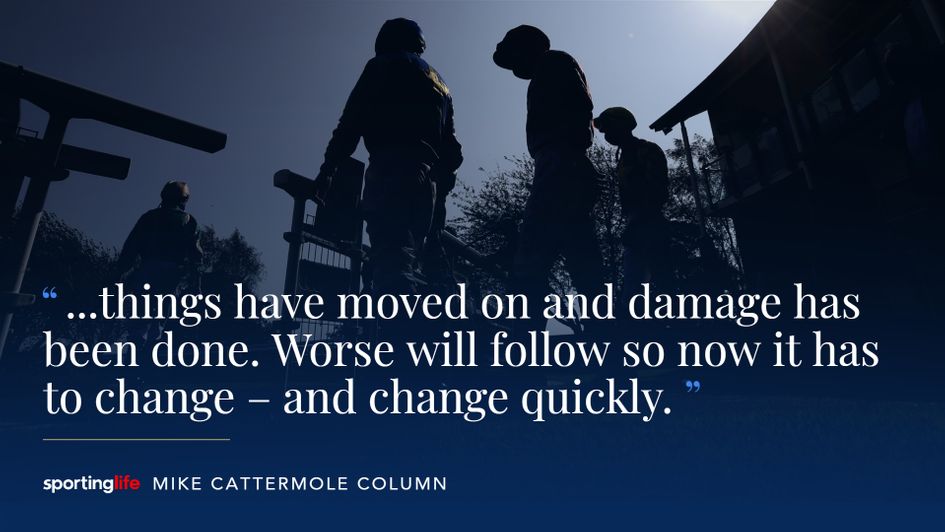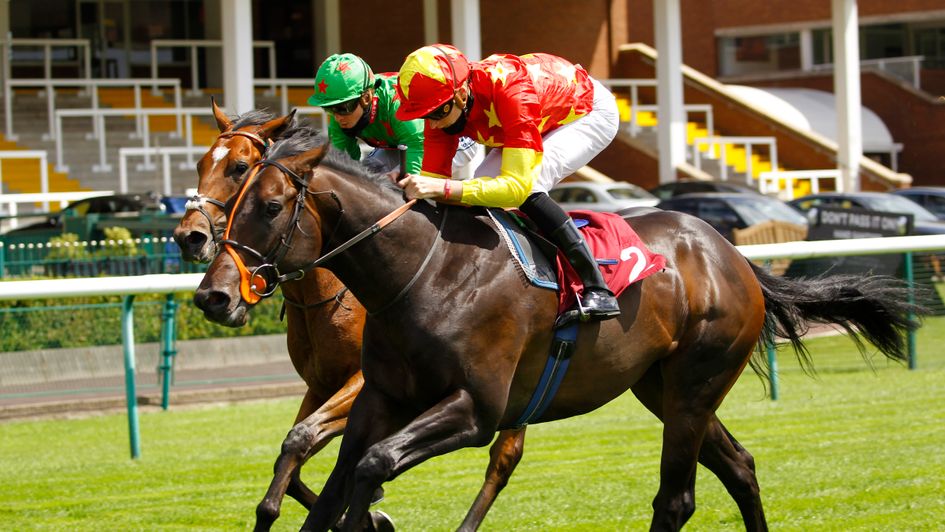
Mike Cattermole column on impact of latest setback regarding return of crowds to racecourses
Mike Cattermole feels racing needs to swiftly get on the front foot when it comes to approaching the government's latest stance on crowds returning to racecourses.
RACING NOW NEEDS TO GET SERIOUS
The thought that sports fans would be allowed to attend live events in limited numbers from October 1, under strict protocols of course, was a genuine glimmer of hope during these humdrum times.
Suddenly, it was all snatched away following a meeting on Tuesday morning between various sporting bodies, of which the BHA was one, and officials from the Department for Culture, Media and Sport.
It was not unexpected, given the recent spike of positive Covid cases, but it was still a bitter pill to swallow.
Especially for racing, just hours after the successful trial at Warwick racecourse where 454 spectators enjoyed a day at the races once again - for just the second time since March.
By all accounts, the Warwick team, headed by Andre Klein, made it work very well indeed and extensive and careful plans were in place for something similar at Newmarket this week, from Thursday through to Saturday. But a line has been swiftly drawn through that.
Yes, this is Newmarket, the Rowley Mile course, with its famous wide-open spaces and a massive capacity to take a fair-sized crowd with ample scope for social distancing and, most importantly, negligible risk.
The bio-security measures that other, more space-limited racecourses, have undertaken since June to organise meetings behind closed doors have been exemplary to these eyes and will serve as a template for larger crowds. Little details, such as the one-way systems for using the toilets, for example, have worked so very well and very safely.
And this is why racing is different to your usual sports stadium where even getting the space to leave your seat to answer a call of nature is causing logistical nightmares for some planners, who are desperately trying to get crowds back to watch, in particular, football, rugby and cricket.
Now we face the harsh and depressing reality that spectators may not be allowed back for at least six months. But it doesn’t have to be this way for our sport. Racing has demonstrated very successfully that a limited crowd can work. Its set-up is very different to other sports.
I don’t doubt that behind the scenes, the BHA has been working diligently to get the ear of the government. Even so, the overriding impression is that racing has been too concerned to be seen rocking the boat in recent months.
After what has happened this week, and before at Doncaster when their proposed pilot days were scrapped, that 'softly, softly' tactic perhaps needs a review.
Raising your voice in any stressful environment doesn’t tend to help. However, now is the time for racing to set out its case clearly and explain that it can accommodate a limited number of spectators perfectly safely and help keep this important industry alive and not risk it being ravaged by lockdown with the inevitable loss of jobs and businesses.
I wrote about racing “treading carefully” in the early days of the lockdown when the negative fallout from the Festival was at its height. Racing couldn’t be seen to be looking insensitive and too self-absorbed and therefore risk a PR disaster.
But, we are over half a year on now, things have moved on and damage has been done. Worse will follow so now it has to change – and change quickly.
We need to be proud of what we can offer and stand up to potential criticism, such as dealing with that incredibly annoying and entirely false story about the coach party from Wales, said to be riddled with Covid, attending Doncaster’s pilot day.
The story was codswallop, seemingly designed to damage racing. To hear it being repeated on the leading news networks, long after it had been proven to be fake news, was infuriating. Anybody who had worked to put that day together at Town Moor had every right to be incensed, twice over, at both the actual story and the insipid response to it.
It should have been met with a far more robust and stern response from our industry and stopped in its tracks.
Last week, Richard Thomas, the highly regarded chief executive of the Chester Race Company which also runs Bangor and Musselburgh, pointed out that their flagship racecourse might have to be mothballed in 2021 if no spectators are allowed back. Talk about a giant red flag.
If Chester does temporarily shut down, it would most probably come back. It is an amazing racecourse and a massively successful business, which thrives on large crowds. However, make no mistake, other tracks will not be so fortunate unless things change.
Yes, we all need to be vigilant in these worrying and uncertain times but there needs to be some perspective and I have no doubt that a limited crowd at most of our racecourses would work. It wouldn’t solve all of the issues but it would give the sport a much-needed lifeline.
We know and accept that the government is calling the shots but the government must be made aware that it can’t apply the same social distancing rules to sports staged in an enclosed stadium compared to one staged over a lot of outdoor space where movement is so much more flexible and obviously safer.
Racing needs to get on the front foot and explain to the government that, in this instance, one size most definitely does not fit all.
BIG WEEK FOR COX
This is a massive week for Clive Cox who is unleashing the best of his two-year-olds at Newmarket.
Isabella Giles, who romped home in the soft in Goodwood’s Group Three Prestige Stakes last month, steps up to Group Two level on Friday to take in the Shadwell Rockfel Stakes. And rain is coming.
Then on Saturday, Cobh must be a serious contender for the Group Two Juddmonte Royal Lodge, having won at Listed level over a mile at Salisbury last time and therefore boosting the form of that very hot Listed race at Ascot in which he was runner-up to the future Champagne winner, Chindit.

After that, all eyes will be on the unbeaten Supremacy in the Group One Juddmonte Middle Park, the colt having lived up to his name with a four-length stroll in the Richmond Stakes at Goodwood. All three of his starts so far have been on a sound surface.
The son of Mehmas may be joined by shock Coventry winner Nanda Parrado. The Coventry form has taken a real battering but Nanda Parrado did his bit to actually build on it when runner-up in the Prix Morny.
Cox has a proven track record of unearthing champions for a relatively reasonable outlay. Harry Angel cost £44,000 as a yearling, expensive though compared to Lethal Force who was one of the bargains of all time at just 8,500 euros. His son, Golden Horde, a Group One winner this year for the yard, was a £65,000 yearling.
For the record, Isabella Giles cost 45,000 euros, Cobh was 100,000 euros, Supremacy £65,000, while Nando Parrado was led out unsold at the sales at 200,000 guineas.
Next Off
Most Followed
MOST READ RACING



















